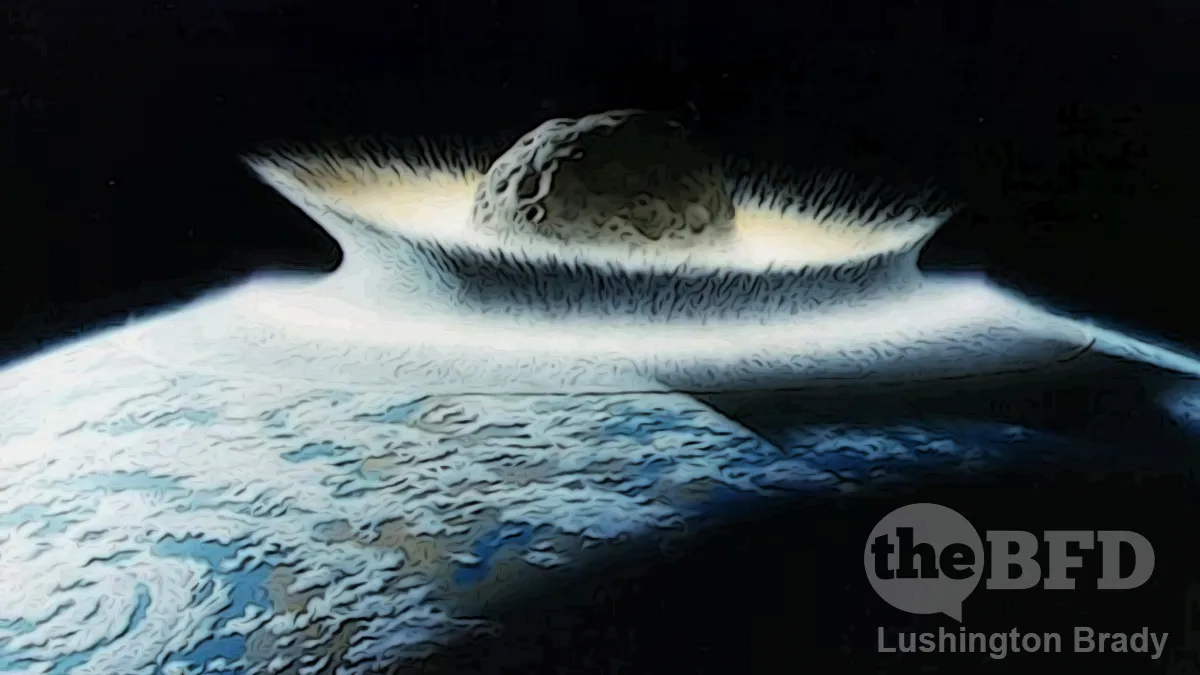Table of Contents
You know, the world’s been going to end in the next ten years ever since I was a boy. If it wasn’t the nuclear war or the killer robots, it was overpopulation or the new Ice Age. Meteors, comets, pollution or the Wrath of God: if you’re an end-of-the-world buff, it’s been a never-ending feast. Catastrophic climate change is just a big ol’ cake with sparklers being wheeled out to top off the millenarian festivities — except, instead of a buxom beauty in a bathing suit, an ugly, scowling teenager in an expensive windbreaker has burst out.
So, as we enter into a new year and another inevitable round of end-of-the-world predictions, let’s have a look back at some of the greatest hits of the We’re All Gunna Die club.
Prior to Judeo-Christianity, most religions took a circular view of time, so the world was never going to end for good. It was all just a circle of death and rebirth. Even the Nordic Ragnarok ended with a reborn world.
Similarly, a recently-famous “end of the world” prediction isn’t what the doom-mongers say it is. The Mayan calendar supposedly pointed to the end of the world in 2012. But, as scholars pointed out, the Mayan calendar was cyclical: at the end of the calendar, just reset and go back to the start.
But Judeo-Christianity posited a universe with a definite beginning and definite end.
There were already various prophecies about the end times in the times of the Roman Empire. But the Apocalypse of Saint John is perhaps the most influential biblical text on the signs that will announce the world’s end.
However, the Bible does not include a specific date when that particular Armageddon will occur.
Which has never stopped ingenious fruitcakes from trying to convince everyone that they’ve cracked the case of the apocalypse.
In the book ’88 Reasons Why the Rapture Will Be in 1988′ by NASA engineer and biblical researcher Edgar C. Whisenant […] the rapture would occur in 1988. Edgar C. Whisenant sold almost five million books, and the world did not end.
Then there are the endless garden-variety prophets of doom.
Some have revealed prophecies about a distant end of the world. That is what Nostradamus did in his intricate writings, which gave rise to diverse interpretations. The 17th-century visionary was not optimistic, and everything was a misfortune in his predictions.
Leonardo Da Vinci also wanted to predict the date of the end of the world. And he did it his way, including an encrypted message in the middle of one of his most famous paintings.
According to Da Vinci, the world will end on March 21, 4006, and we will perish in a new universal flood. Vatican researcher Sabrina Sforza Galitzia declared to the British newspaper Express: “There is a Da Vinci code, but it is not the one popularized by Dan Brown.” The date was deduced from various symbols on the painting translated into numbers.
But it’s not just wild-eyed Holy Joes and nutty Frenchmen who’ve spouted loony end-of-the-world scenarios. Scientists are just as guilty of indulging in millenarian manias.
Halley’s Comet, whose passage lit up the sky in 1910, sparked a collective wave of hysteria and fear of the world’s end.
As Wired recalls, the French astronomer Camille Flammarion argued in media such as The New York Times that when the comet passed by, “cyanogen gas would permeate the atmosphere and possibly extinguish all life on the planet.”
It should surprise no-one that the NYT was embigenning pseudo-scientific nonsense. They’re still at it, after all
Even the supposedly sobre paragons of The Science™ have a long history of pseudo-scientific doomsaying that they’d prefer we all quietly forgot about.
In 1960 an article in Science magazine headlined: ‘Doomsday: Friday, November 13, 2026’. It was explained like this: “On this date, the human population will approach infinity if it grows as it has done in the last two millennia.”
Another calculation predicts a technological collapse in the year 2038. On that date (supposedly), the programming of many devices will be obsolete, and they will not be able to be restarted; they will not work.
It’s quietly forgotten, too, that the same coalition of environmental doom-mongers and interfering old biddies who are now gluing themselves to roads were out in force to try and stop the launch of the hugely successful Cassini probe. These enviro-loons were absolutely convinced that the tiny amount of radioactive material powering Cassini was an existential threat to all life on Earth.
Spoiler alert: it wasn’t.
Then, of course, there was the biggie of pseudo-technological calamities: Y2K.
It’s strange to recall, now, the absolute hysteria around Y2K. The idea was that, because older computer operating systems had abbreviated dates to two digits (“88”, “92”, and so on), that when 2000, or “00”, rolled around, the ubiquitous computers would go haywire, unable to tell if it was 2000, 1900 or 1600. Supposedly, passenger jets would plummet from the sky, banking systems would collapse — even your humble microwave would… well, no-one knew what, exactly, but if it was computerised, it was gonna be bad.
However the collapse of computers and cybernetic material that some experts claimed would occur never happened. And both machines and humans quietly entered the 21st century without any “Y2K” disasters.
MSN
In retrospect, Y2K was an object lesson in paying too much credence to apparently “scientific” predictions of disaster. “Climate change” is Y2K on steroids. Even the claims that it didn’t happen because they spent so much money to avert it are easily falsified. Some technologically-advanced nations spent billions on “Y2K preparedness”, others spent almost nothing and adopted a “wait-and-see” attitude.
There was virtually no difference in outcomes.
You’d think we’d have learned from that, but as climate alarmism and the Wuhan pandemic have shown us, people are as eager to be scared out of their wits by obvious nonsense as ever.









